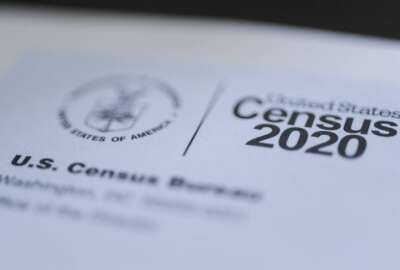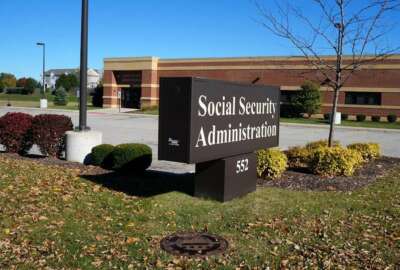Hubbard Radio Washington DC, LLC. All rights reserved. This website is not intended for users located within the European Economic Area.
CMS to take on improper payments in new way
The agency plans to follow the model credit card companies use to identify potential problems on the front end instead of trying to chase down the money after t...
By Jason Miller
Executive Editor
Federal News Radio
The Centers for Medicare and Medicaid Services is taking a page out the credit card industry’s playbook to reduce the amount of money they pay out improperly.
CMS is reviewing bids from contractors for predictive modeling services.
“We received about $100 million from the Small Business Jobs bill and some of that goes to create a contract to do predictive modeling,” said George Mills, director of CMS’s compliance group at an event on improper payments Wednesday in Washington sponsored by 1105 Government Information Group. “We do a lot of data analysis on the back end, but the law requires us to focus more on the pre-payment challenges and less on the post-payment areas.”
Mills said CMS, like many agencies, needs to get away from the “pay-and-chase” approach, where recovering improper payments only happens after the fact, instead of stopping it on the front end.
That is where predictive modeling comes in. Credit card companies have been using this approach for some time. The companies look for patterns or instances that don’t fit the user’s typical buying. For instance, if a credit card holder all of a sudden starts charging in a foreign country, after never having charged out of the United States before, the credit card company flags it and calls the account holder to make sure the account hasn’t been hijacked.
Mills said that CMS still is needs to know more about how predictive modeling would work.
“We have this tool, but how do we know it’s going to be a success?” he said. “Randomly, if I have a 10.5 percent error rate, well the tool better be able to identify problems at a higher rate than 10.5 and then when you break it down into specific areas of claims, the error rates might even be higher. Part of it for us, how to distinguish whether it’s really working good and then there is other aspects which is the anti-fraud part of it too.”
CMS has an error rate that varies by program between 9.4 percent for Medicaid to 10.5 percent for Medicare fee-for-service. In all, CMS accounted for about 46 percent of the $120 billion in federal improper payments in 2010. The Department of Health and Human Services accounted for $71.4 billion of the total improper payments in 2010.
The Obama administration is placing a heavy focus on recovering improper payments. In 2010, the White House reported agencies recovered $687 million. That total was a 300 percent increase, or three times, over what the government recovered in 2009.
CMS is one of the 14 programs the Office of Management and Budget designated as a high-error rate program. These programs account for 94 percent of all improper payments across the government.
OMB wants to get the governmentwide error rate down to 4.18 percent by 2013. In 2010, it was 5.49 percent, down from 5.65 percent the year before.
CMS and other agencies are taking several different approaches to reducing this number further.
The Social Security Administration, for instance, is implementing Access to Financial Institutions project (AFI) to get automated bank information and look for undisclosed bank accounts to see if people are getting benefits that don’t deserve them.
“We try to use data from external sources but also from internally in new ways we hadn’t thought of before,” said Judith Oliveira, the division director in Boston for the SSA inspector general.
HHS also is implementing the Public Assistance Reporting Information Systems (PARIS) program to see if beneficiaries are getting payments in other states or checking against other databases.
Kay Daly, the director of financial management and assurance at the Government Accountability Office, said this is one way to prevent improper payments or detect them once they have been issues through data matching.
CMS is using several of these tools already. Mills said the agency does data matching with SSA, IRS and the private insurers. CMS issues billing reports so providers can compare themselves to others to see if they are doing something wrong.
“We are implementing electronic health records which hopefully will help the cause in improper payments in terms of poor documentation,” he said. “We do extensive editing of claims.”
Mills said CMS also is a leader in using recovery audits. Under a pilot program, CMS recovered more than $1 billion in improper payments. CMS ran tested this concept in 2009 with three states and is now expanding it to all 50 using recovery audit contractors to uncover improper payments. In the three-state pilot, OMB states CMS recovered through the contractors about $900 million over three years.
OMB controller Danny Werfel has said that the administration expects to recover more than $2 billion from the expansion of the program.
Mills said agencies should be careful as they use recovery auditors because they need to strike a balance.
“This is a very salacious topic among medical providers because the auditors to a large extent are going out and second guessing or saying ‘I don’t agree with your decision to provide this or this is not appropriate,'” Mills said. “The providers have a lot of angst about recovery auditors. We have a balancing act about recovering mistaken payments as well as ensuring accuracy of the decision making. We’ve implemented a lot of steps to ensure their actions are appropriate.”
A recent GAO report also highlighted several steps CMS could take to improve its error rate.
- Strengthening provider enrollment standards and procedures;
- Improving prepayment review of claims;
- Focusing postpayment claims review on most vulnerable areas;
- Improving oversight of contractors;
- Developing a robust process for addressing identified vulnerabilities.
The Department of Housing and Urban Development has been successful in reducing its error rate. In 2000, HUD sent out improper payments 17 percent of the time.
David Sidari, HUD’s deputy CFO, said the agency’s error rate is down to three percent and it cleared up 36 material weaknesses in its financial management system.
He said over the last decade HUD made major changes including reorganizing the departments, centralizing the support functions and consolidated offices in the field.
“We tried to simplify our processes as opposed to making them more complicated,” he said. “We found that simplification helped our controls because people understood better where they were in the whole process and were able to better understand where they fit in performing those controls.” HUD also spent more money on training and rewrote their policies and procedures to improve internal controls.
But the key, Sidari said, was involving the program people in this effort.
“It wasn’t something finance could go off and do or just the IG or just a little task force, the entire agency was involved in the change,” Sidari said. “Once they got the entire organization involved and once the program offices were engaged in making the change that is when they really got traction and started to move forward.”
Other agencies also are making progress. Daly said HHS’s Head Start program reduced its improper payments by 1.3 percent, or $90 million in 2010. Additionally, the Agriculture Department’s Marketing Assistance Loan program reduced its error rate by 1.75 percent, or $50 million last year.
Daly added that OMB will issue more guidance around improper payments in the coming months to implement the Improper Payments Elimination and Recovery Act signed in to law last June.
(Copyright 2011 by FederalNewsRadio.com. All Rights Reserved.)
Copyright © 2024 Federal News Network. All rights reserved. This website is not intended for users located within the European Economic Area.
O’Malley outlines plans to rebuild Social Security Administration workforce
Related Topics
Agency Oversight
All News
Budget
Centers for Medicare and Medicaid Services
Congress
Department of Health and Human Services
Department of Housing and Urban Development
Government Accountability Office
Improper payments
Management
Office of Management and Budget
Social Security Administration
Technology




